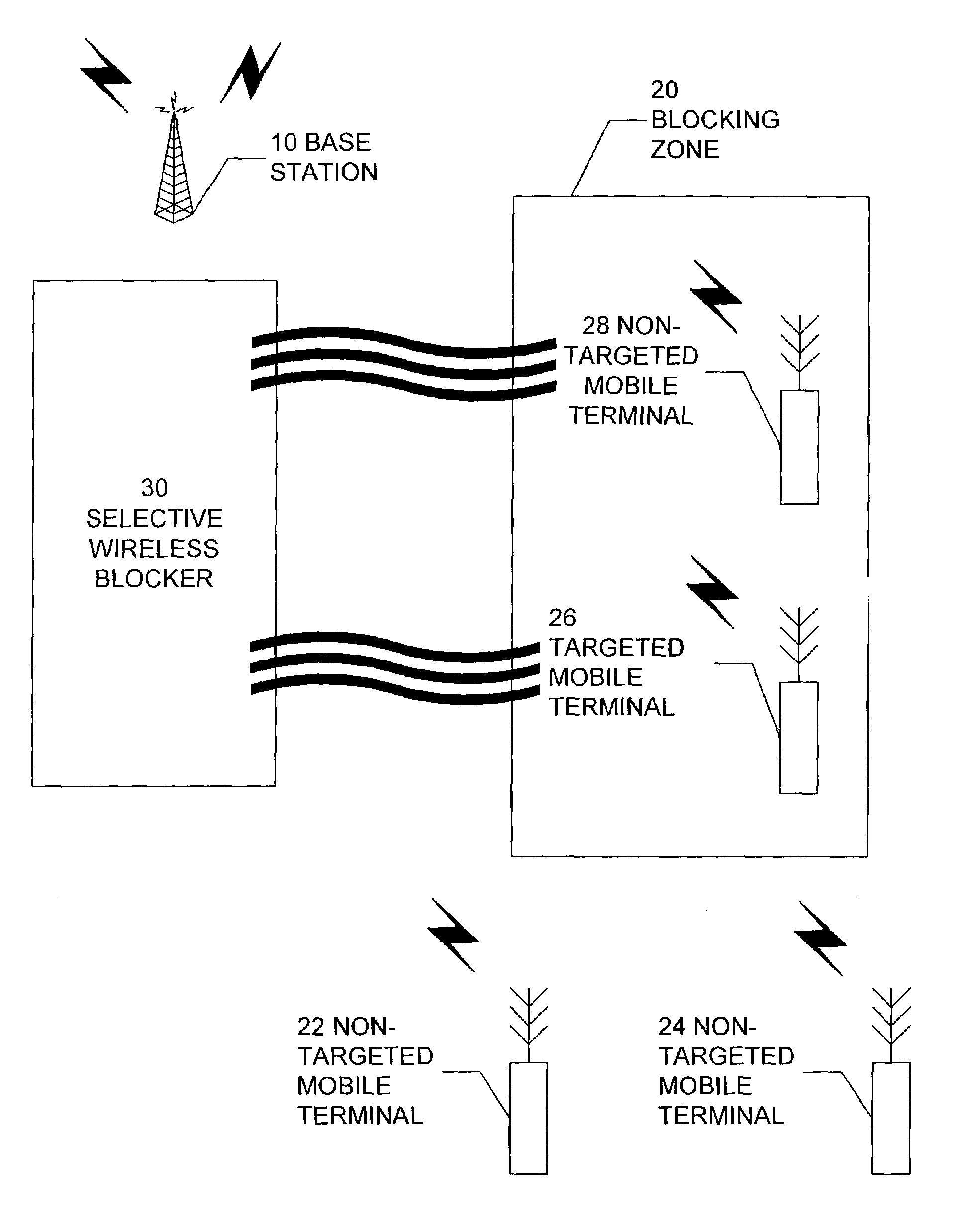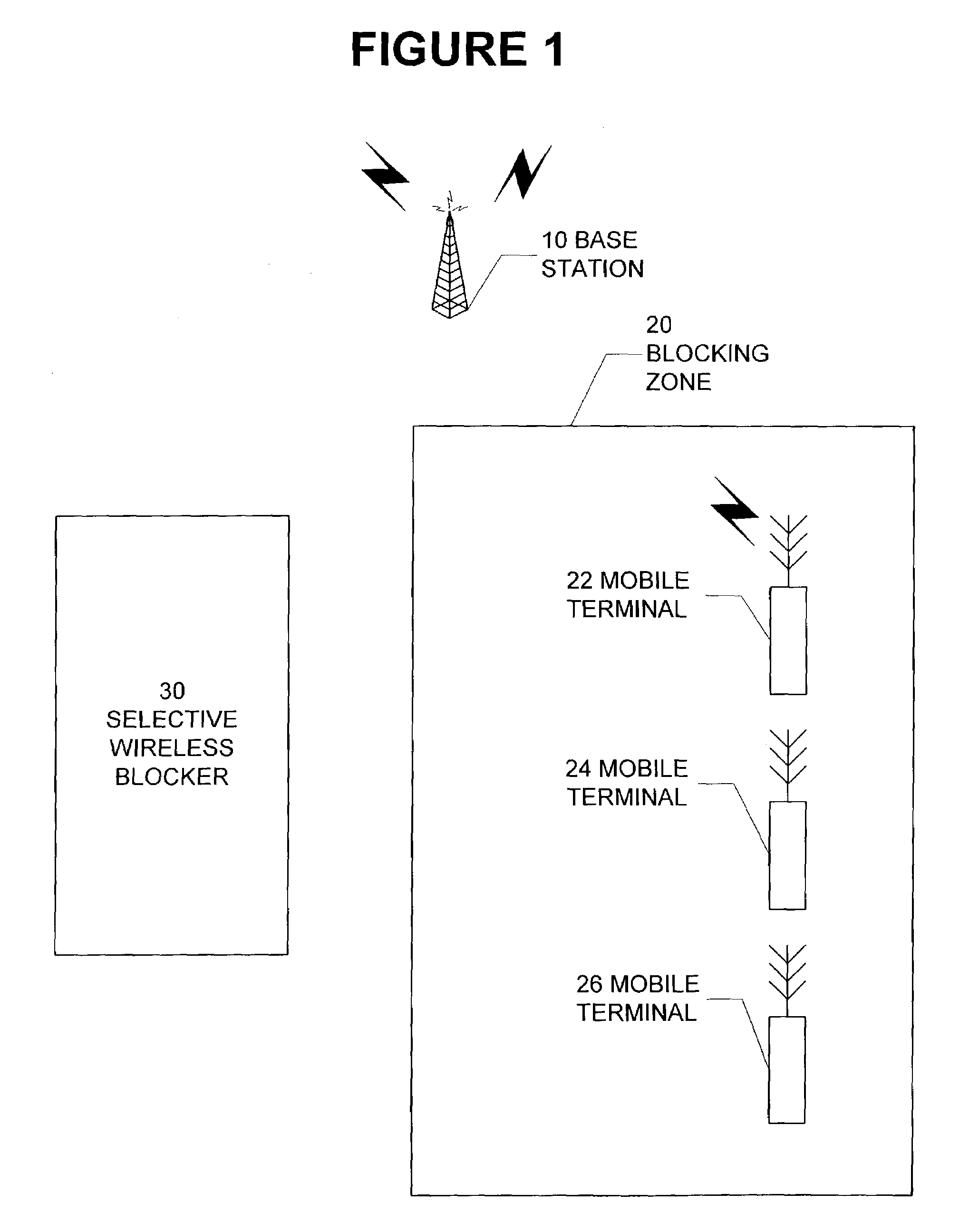Targeted mobile terminal communication blocker
a mobile terminal and communication blocker technology, applied in the field of targeted mobile terminal communication blockers, can solve the problems of all cellular phones in the target area to be jammed, cellular transmission may threaten sensitive instruments, and spotters within banks cannot communicate with outside henchmen, so as to achieve the effect of reducing interference with communications
- Summary
- Abstract
- Description
- Claims
- Application Information
AI Technical Summary
Benefits of technology
Problems solved by technology
Method used
Image
Examples
Embodiment Construction
[0027]An embodiment of the present invention is a system and method for selectively blocking wireless communications within a blocking zone. In accordance with this embodiment, a call origination signal is detected from a targeted mobile terminal. An appropriate blocking response is determined and a blocking signal comprising the blocking response is transmitted to the targeted mobile terminal. The blocking signal is targeted at a blocking zone so as to minimize interference with communications of non-targeted mobile terminals.
[0028]Referring to FIG. 1, three mobile terminals 22, 24 and 26 are located within a blocking zone 20. Mobile terminal 22 is engaged in wireless communication. The targeted mobile terminal 26 is quiescent as is the third terminal 24, a non-targeted mobile terminal. The selective wireless blocker 30 monitors the blocking zone for activity emanating from the targeted mobile terminal 26. A base station 10 is broadcasting multiplexed packets to clients within its ...
PUM
 Login to View More
Login to View More Abstract
Description
Claims
Application Information
 Login to View More
Login to View More - R&D
- Intellectual Property
- Life Sciences
- Materials
- Tech Scout
- Unparalleled Data Quality
- Higher Quality Content
- 60% Fewer Hallucinations
Browse by: Latest US Patents, China's latest patents, Technical Efficacy Thesaurus, Application Domain, Technology Topic, Popular Technical Reports.
© 2025 PatSnap. All rights reserved.Legal|Privacy policy|Modern Slavery Act Transparency Statement|Sitemap|About US| Contact US: help@patsnap.com



